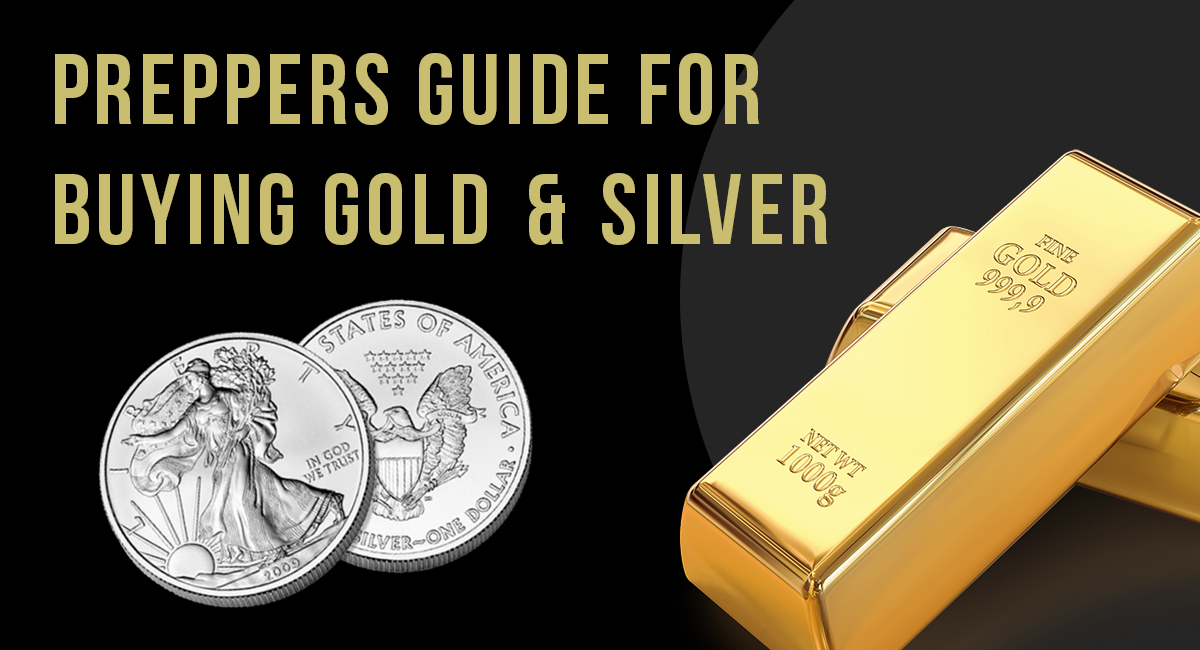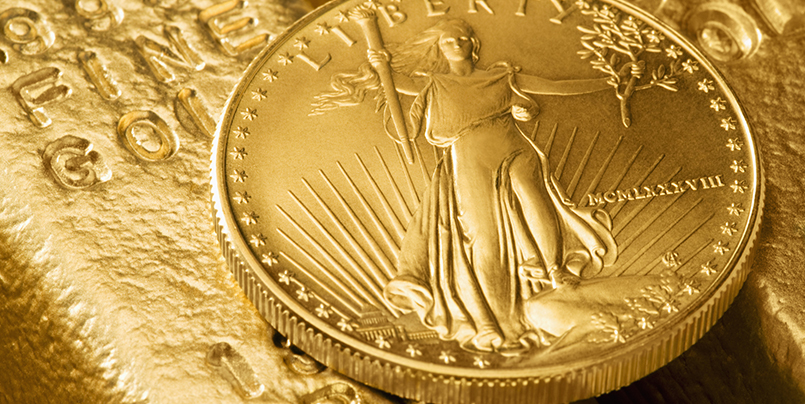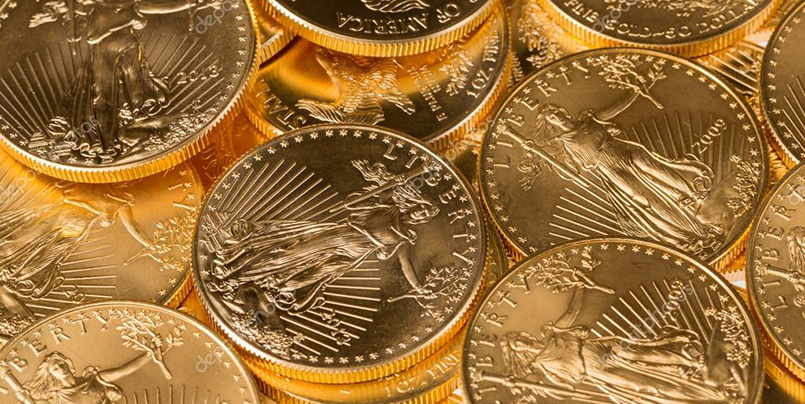Having made the important decision to invest in physical gold in order to buffer your portfolio against the shocks and uncertainties of the stock market, your next step is to decide whether to concentrate on Gold Coins vs Gold Bars. To a large extent this depends on your motivation for investing, how much you are intending to invest, your long-term goals, and the potential returns on resale of your gold.
Gold coins and gold bars each have unique characteristics that may influence your decision as to which form of gold to focus on, but in the end, it may be wise to have a mixture of the two types, but with the greater proportion of your investment concentrated in the form of physical gold that suits your particular requirements.
In order to help you come to an informed decision, we have listed the main characteristics of buying gold coins vs gold bars, as well as how and where best to buy each form of gold.
The Main Characteristics of Gold Coins
Modern gold coins enjoy the status of legal tender, even though they are not in every-day circulation, and are therefore not subject to taxes applicable to purchasing and selling gold in other forms, such as jewellery. Numerous countries produce gold coins in their government mint as a form of revenue generation, and these can be purchased by foreign as well as local investors. Modern bullion gold coins are minted in volumes that are not intended to have any numismatic or special collectible value, but the coin’s value is based not on its stamped face currency amount, but on the spot price of the amount of gold it contains, with a small premium to cover costs of minting and distribution.
Legal Tender
Gold coins usually follow the format of standard legal tender coins in appearance, with the face value of the coin stamped on the front of the coin, called the obverse, and the name of the coin stamped on the back of the coin, called the reverse. Also to be found on the reverse would be the weight of the coin, its year of minting and sometimes its purity. Coins from different countries may differ in this regard, for example, the Canadian Maple Leaf has both the year of issue and the face value on the obverse, whereas the Britannia’s obverse only contains the coin’s face value, with the name of the coin, its weight and year of issue all on the reverse.
Gold coins generally have a milled edge, to deter ‘shaving’ of the coin – that is, scraping or filing off some of the gold on the edge of the coin.
Various sizes
Most gold coins are produced in a 1oz format, but many mints also produce ‘fractional’ coins, in ½oz, ¼oz and 1/10oz formats, with some also producing larger coins such as the 12oz Gold Panda, and the 2oz, 10oz, 1kg and 1 tonne Australian Gold Nugget!
When looking to buy a gold coin privately, other than through a reputable dealer, one should check its weight and size to ensure that it is the genuine article. Do your research to find out what the weight and dimensions of the particular coin are. Buy or borrow a pair of callipers to measure the coin with; diameter and thickness.
Weight and Purity
A digital pocket scale can be used to measure its weight. Bear in mind that some gold coins, including the American Eagle, Britannia and the Krugerrand, contain 91.7% (22 carat) gold with the remainder an alloy to increase hardness, whereas others such as the Maple Leaf, Panda and Kangaroo, contain almost no alloy, being 24 carat (99.99%) gold. The former will therefore weigh slightly more than the weight stamped on the coin, since the stamped weight indicates the amount of gold alone, not the full weight of the coin.
Also note that the weight of gold coins and bullion is normally given in ‘troy’ ounces (31.1g), and not regular ‘avoirdupois’ ounces (28.35g).
Some Advantages and Disadvantages of Gold Coins
Modern gold bullion coins hold several advantages over bullion bars. These include:
- Legal Tender Status – Gold coins do not attract taxes in many parts of the world.
- More Collectible – Slightly higher premium possible when selling coins than bars.
- Highly Liquid – They have a narrower bid-ask spread than bars, meaning you’re more likely to be able to sell coins than bars when you need funds.
- Easy to Conceal – Can be transported and stored inconspicuously.
A disadvantage of owning gold coins is that the premium that can be obtained when selling them may not be as much as that paid when buying them.
The Main Characteristics of Gold Bars
Gold bullion bars or ‘ingots’ are produced by private mints as well as sovereign mints, usually in the form of rectangular slabs in sizes ranging from 1oz to 10oz, although some facilities produce minted bars as small as 1g and as large as 1kg and more. They aren’t considered legal tender but are intended mainly for gold investment purposes, although they may also be purchased for manufacturing purposes (usually in a bar or round format).
Cast or Minted
Bars may be cast or minted. Cast bars tend to have rougher edges and surfaces, and are stamped with the manufacturer’s logo and the details of the bar as soon as they have been removed from the mould. Cast bars may vary slightly in weight around the intended size, so, for instance, standard ‘nominal 400 ounce’ gold bars that are held by many central banks, are permitted to vary in weight between 350 ounces and 430 ounces. The exact weight will be stamped on each bar, along with its fineness, or purity.
Most gold bullion bars are cast at a purity of .999 or 99.9% (24 carat), with some having a fineness of up to .9999 or 99.99% (‘four nines’).
Minted bars are usually found in smaller sizes and may start out as cast bars or else are cut from rolled gold. After this, they undergo a multi-staged process to produce an identically smooth, even finish on each bar, before being struck with the manufacturer’s logo and the details of the bar. The bar might then sealed in tamper-proof plastic capsule and issued with an assayers certificate and a serial number, such as the case at the PAMP Mint in Switzerland.
Some Advantages and Disadvantages of Gold Bars
- Cast gold bars have a lower premium than gold coins, making them cheaper to purchase.
- Small bars are easy to store and transport.
- Larger bars allow bulk purchases with even lower premiums.
However, gold bars tend to lack the collectible value that some gold coins may acquire over time.
Large bars give less flexibility to the owner when looking to sell or barter them.
Nevertheless, owning gold in any form is considered far better than not owning any gold, so when it comes to buying gold coins vs gold bars, either opportunity should be viewed as a solid precious metal investment.






